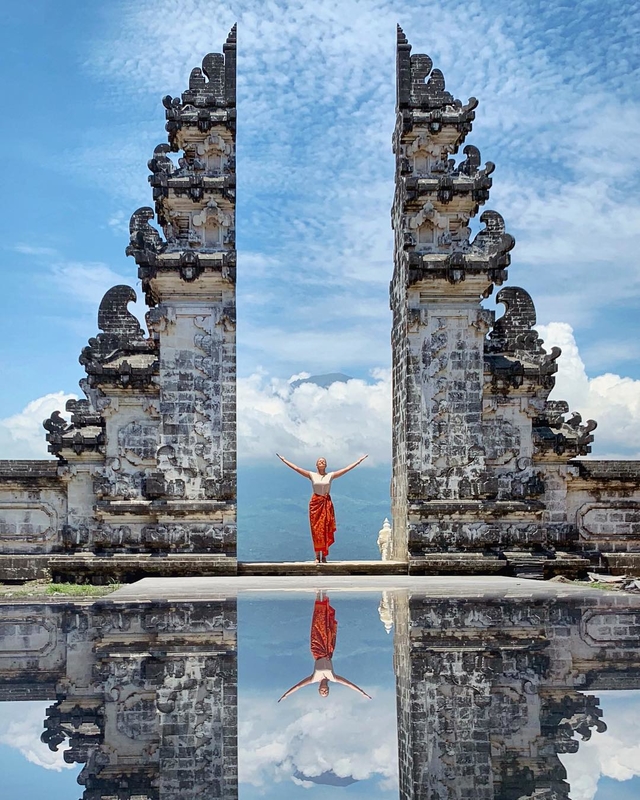
Every second tourist who has visited Bali either has a photo from the Pura Lempuyang temple on their Instagram or has dreamed of one, where they stand in the carved gates against the backdrop of Mount Agung, and the same view is "magically" reflected in a skillfully placed mirror below. The trend with mirrors started not so long ago but has already become a widespread fascination.
In the inner courtyard of the Pura Penataran temple, a queue of tourists forms, eager to pose. Yet, the entire complex consists of 7 temples, and usually, tourists visit only the lower one. Don't be too disappointed – it is the most accessible and richly decorated.
From bottom to top, the temples of the Lempuyang complex are arranged.
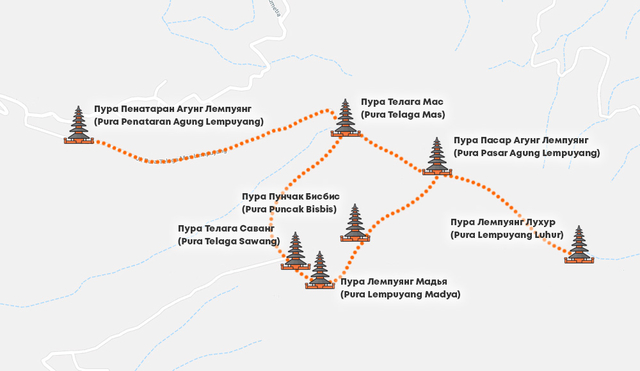
1.Pura Penataran (Pura Penataran Agung Lempuyang) - precisely the one from Instagram
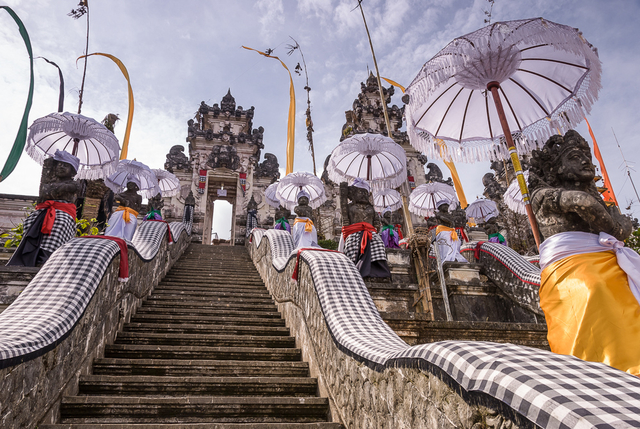
2. Pura Telaga Mas (Pura Telaga Mas) - small and very modest
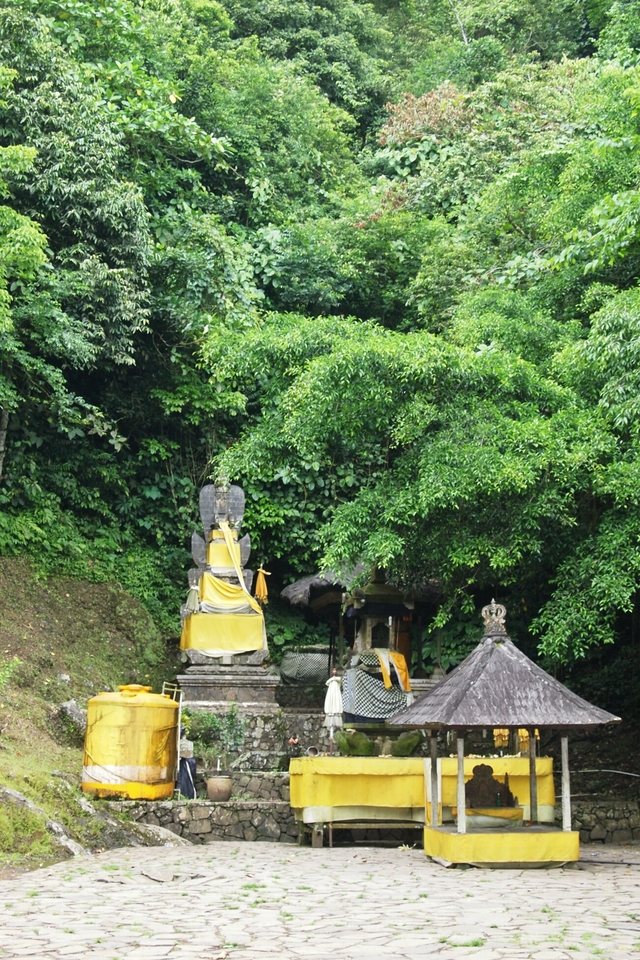
to Pura Pasar Agung (Pura Pasar Agung Lempuyang) - also a quite simple temple

and the most important and high-altitude Pura Lempuyang Luhur, located at an altitude of 1175 meters above sea level

From Telaga Mas, you can also turn right and make a loop
3. Pura Telaga Sawang, a temple with holy water spring
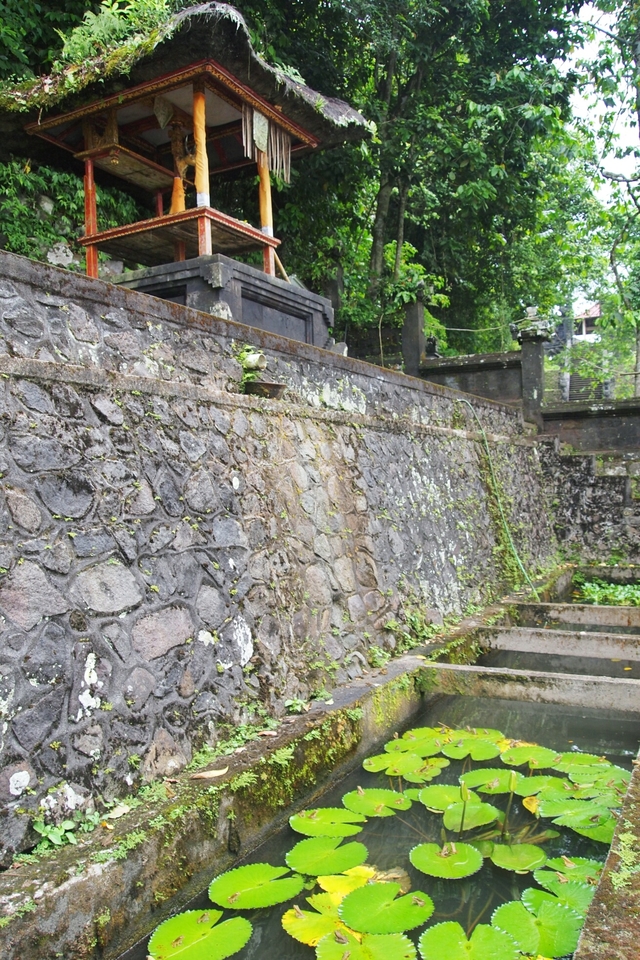
4. Pura Lempuyang Madya - a temple visited for prayers for a happy family life
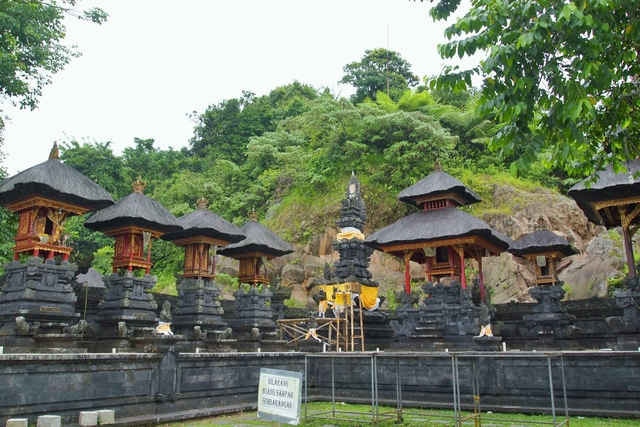
5. Pura Puncak Bisbis - a small temple more resembling an altar
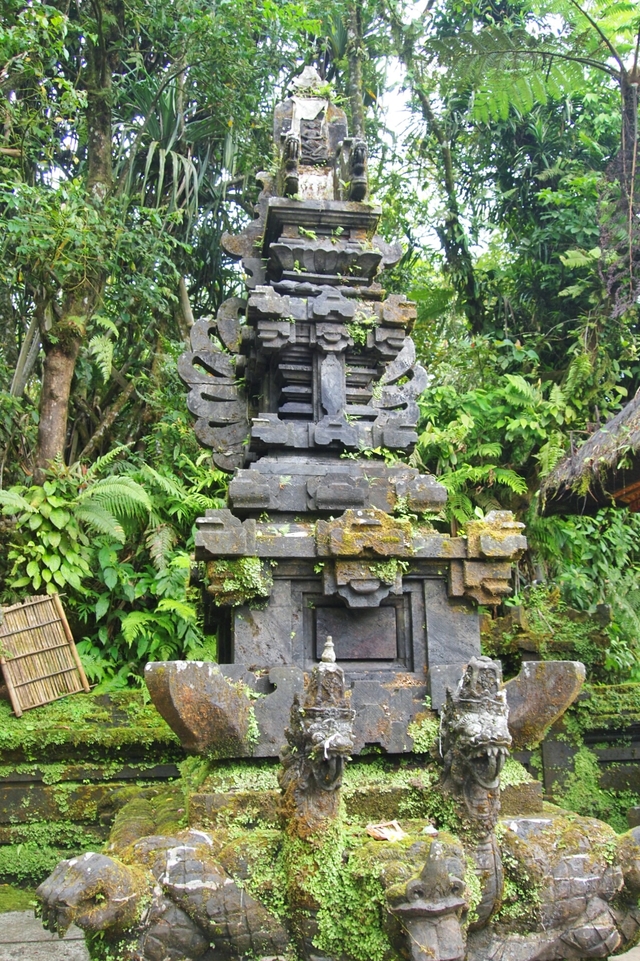
The route depends on how determined you are to wander through mountain paths and your physical condition.
If you are well-prepared, the short route through temples 1, 2, 6, 7 will take you about 2-4 hours. And through all the temples 1, 2, 3, 4, 5, 6, 7 - about 4-6 hours.
Balinese people believe that the Lempuyang Temple is part of the Sad Kahyangan Jagad, the six holiest places on the island, which are key to maintaining Bali's spiritual balance.
The entire Mount Lempuyang is divided into three sections, corresponding to Balinese cosmology. The base of the mountain is known as Sang Ananta Bhoga, connecting the mountain to Brahma; the middle part is known as Sang Naga Basuki, connecting the mountain to Vishnu; and the upper part of the mountain is known as Sang Naga Taksaka, dedicated to Shiva. The most sacred part is located in the highest temple, Pura Lempuyang Luhur.
- The first and lowest temple, Pura Penataran, was restored in 2001. It is located at an altitude of about 600 meters above sea level. It is divided into three parts like any other Balinese temple: the outer part - jaba pisan, the middle part - jaba tenga, and the inner part - jero. The entrance to the outer first courtyard is marked by white gates resembling a split rock - chandi bentar. These gates are a favorite spot for tourists to take photographs.
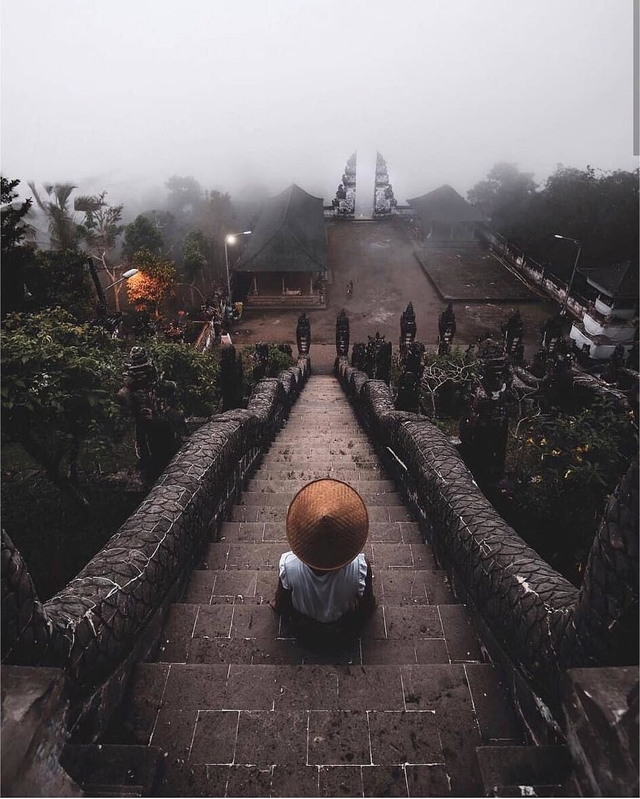
In the courtyard, there are several Balinese pavilions called "bale," a pavilion where the instruments of the gamelan orchestra are stored, and a pavilion where the ceremonial bell, known as "kul-kul," is kept. The kul-kul plays ceremonial functions.
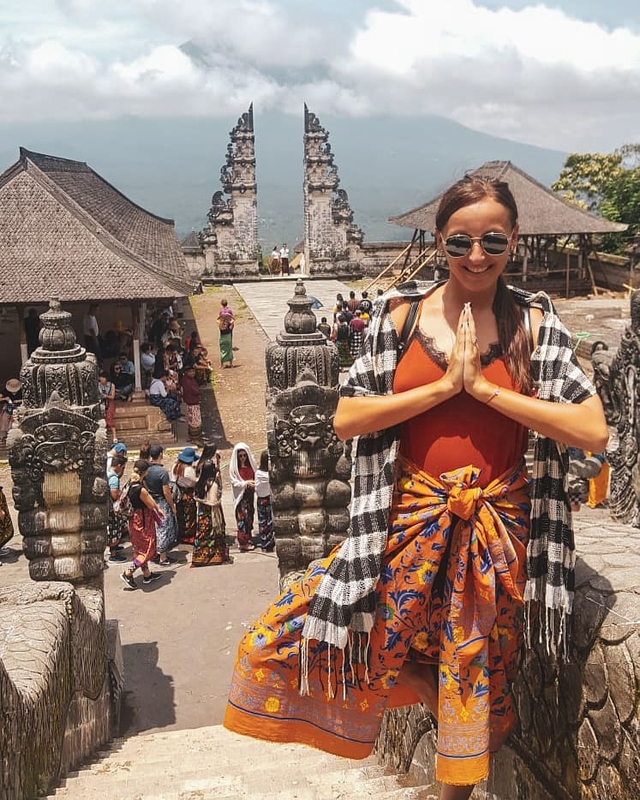
The entrance to the middle courtyard is marked by three paduraksa portals. The left portal is intended for entry, and the right one for exit. The central door is usually closed and opens only on major temple festival days, such as the piodalan celebration, which occurs twice a year. Currently, access to the middle courtyard is closed to tourists, only those who come to pray can enter. However, you can climb up the two impressive staircases leading to the gates. The central staircase is closed for entry.
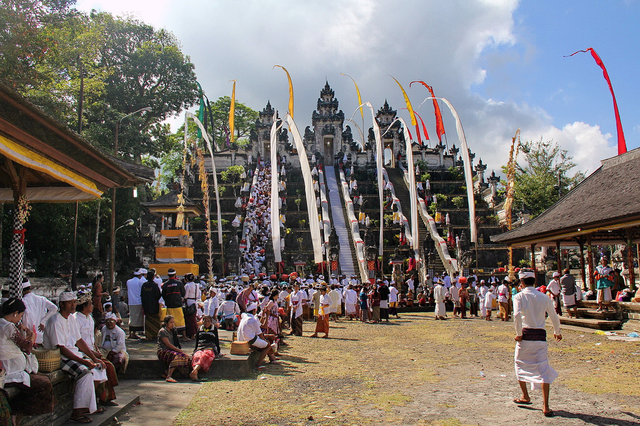

It is believed that only through the central gates can sacred items and offerings be carried during major festivals.
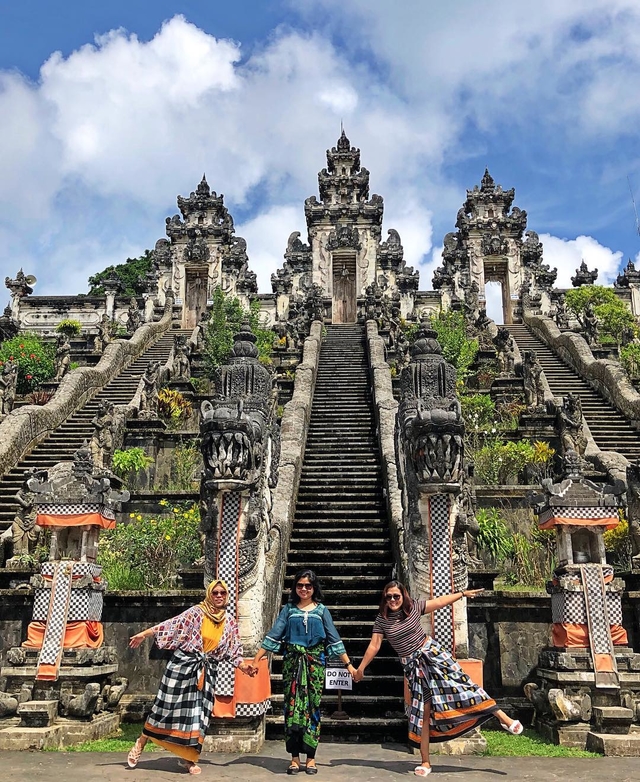
All three staircases leading to the portals are richly adorned with figures of nagas, inspired by the epics of Ramayana and Mahabharata. Nagas and the figures of the Pandava brothers - Arjuna, Bhima, and Yudhishthira - decorate the staircases.

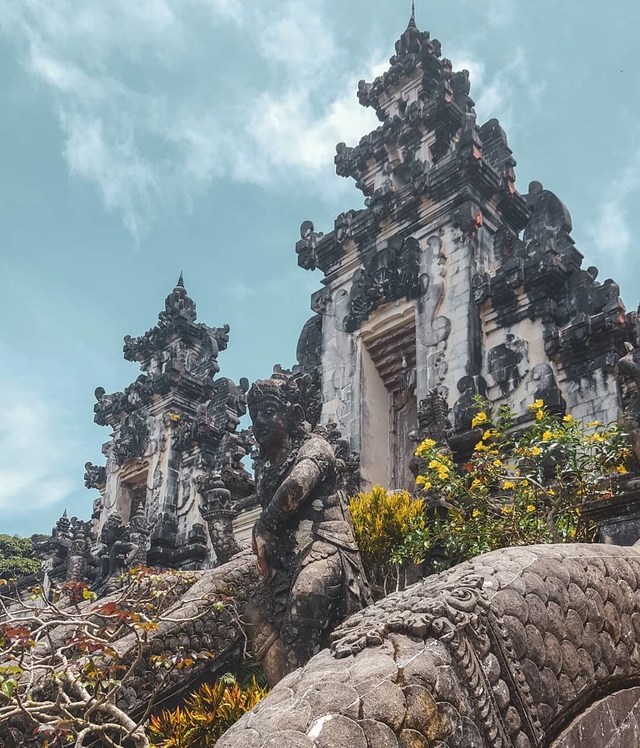
The inner courtyard (djerо) is the most sacred space of a Balinese temple. There are several meru towers and pelinggih shrines dedicated to various gods. The courtyard is adorned with pelinggih shrines in the form of vacant stone thrones, each dedicated to the highest deity of the Balinese pantheon, Sang Hyang Widhi Wasa, and the trinity of gods—Brahma, Vishnu, and Shiva.
Typically, Balinese pilgrims circumambulate the entire Lempuyang complex. It is believed that Balinese people should climb here once every ten years. According to local beliefs, pilgrims with a heavy heart will never reach the top, so the ascent has a spiritual significance. Along the way, one must be dressed appropriately, speak modestly, and refrain from complaining, as it is believed that complaining prevents one from reaching the top.
Throughout the journey, you may encounter gray macaques. The highest temple, Pura Luhur Lempuyang, is much simpler in decoration than Pura Penataran. However, the clouds surrounding it and the silence create a mystical atmosphere. It is said that there are 1,700 steps leading to this temple.
The exact construction date of the temple is unknown, but according to chronicles, it might have been built in the 10th-11th centuries. Local Balinese legends also tell stories about this place. One legend says that when the earth was only 70 years old, Bali was unstable with constant earthquakes. At that time, the god Pacupati, seated on Mount Semeru, asked his three sons to stabilize Bali. Dewi Danu settled on Batur, Hyang Putra Jaya took Agung, and Hyang Gni Jaya settled on Mount Lempuyang.
In the mid-20th century, the temples of the Lempuyang complex were in very poor condition, and the Balinese people rebuilt them. Therefore, the buildings we see in this place are relatively modern.
The name "Lempuyang Luhur" has multiple interpretations. According to one version, it means "Heavenly Vertigo," derived from "luhur" – heavenly, and "lempuyang" – vertigo. According to another version, the word "lempuyang" is composed of "lampu" – radiance and "hyang" – deified spirit of ancestors.
If you decide to ascend to the highest temple of the complex, it is advisable to do so during the dry season when the pathways are in good condition. It is recommended to plan the ascent either in the morning, when it's still cool, or closer to the evening.
If you inform the gatekeepers that you are heading to the upper temple, they may allow you to take a bike along the asphalt road to the Telaga Mas temple. From there, it's only a pedestrian climb.
For those with limited time, traveling with children, or elderly family members, visiting only the Pura Penataran temple might be sufficient to admire the Balinese temple architecture and stunning views.
The temple is open from 8 am to 5 pm. Admission requires wearing a sarong and covering your shoulders. If you don't have a sarong, you can rent one at the entrance for just 10,000 rupiahs. If you have a sarong and covered shoulders, that should be sufficient; tying a belt is optional.
On the approach to the temple, there may be different individuals selling tickets to the temple for 100,000 rupiahs. In reality, you can contribute any arbitrary amount as a donation for entry.
Near the Penataran temple, there are private drivers who can take you for a small fee to the second temple, Telaga Mas. From there, it's only a short uphill walk.
During the rainy season, it's advisable to bring a raincoat, as there's a high chance of rain.
Along the way to the top, you'll come across small stalls with food and drinks, so you don't need to worry about water.
In the temple, guests are prohibited from:
- Assuming yoga poses
- Raising legs high
- Kissing
- Visiting the temple with children under 105 days old
- Conducting drone filming
- Sitting on statues, especially dragon statues
- Removing sarongs
- Entering for women during menstruation days

You can add one right now!